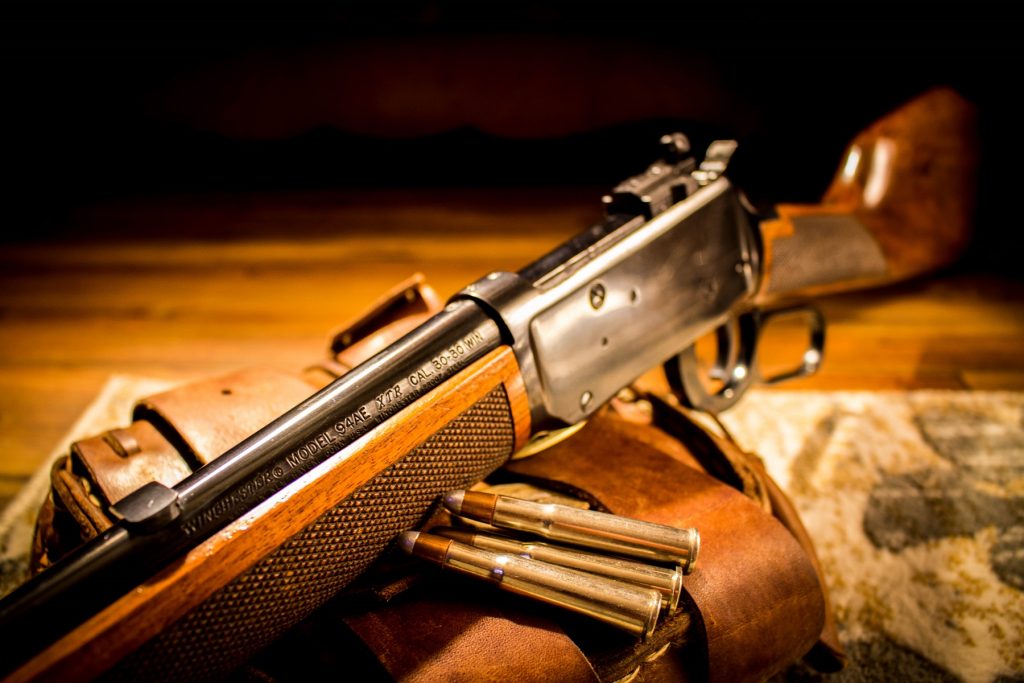
Lever Guns for Eastern Whitetails
Rewind the clock a century, duck your head into any deer camp and you’d easily see a rack of lever-action rifles ready for the hunt. Winchesters, Marlins, Savages—all would be well represented in a plethora of different cartridges.
Today, the bolt-action rifle dominates the scene. That’s in no way a bad thing, but there are those who still embrace the lever-action for their deer hunting. I’m one of them. At least once a year, I take one of my lever guns out deer hunting, and I love it.
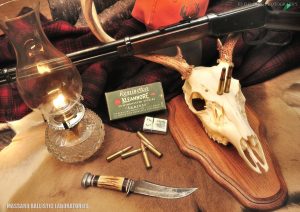
A classic lever-action rifle is right at home in the forests of the East. This Model 94 in .32 Winchester Special is a great example of a close-range deer rifle.
There for the Close-Up
Why would—or wouldn’t—a hunter in the East choose a lever-action rifle as their primary deer gun? Well, I don’t see any reason why a hunter whose shots are predominately inside of 150 yards wouldn’t choose a lever gun, especially one of the modern versions, which are fully capable of wearing a scope. For those who have a nostalgic connection to the methods of our grandfathers or, even better, who may have access to actually hunt with grandpa’s vintage lever gun, taking a whitetail with just such a rifle is simply great fun. They give a quick follow-up shot, something our forefathers certainly appreciated, and they can be cycled easily while keeping the rifle on the shoulder and keeping your eye on your quarry. Let’s look at some of the different models available.
Winchester’s Model 1894
The Winchester Model 1894 is certainly one of the most iconic American firearms ever. With more than 7,500,000 rifles produced, it has earned its place in history.
It was the first to be chambered for a smokeless powder cartridge, the .30-30 Winchester, in 1895. It was and still is a light and handy rifle. While it is available in other cartridges today, the .30-30 is classic deer medicine and makes a great choice for the deep woods hunter of the East. Modern variations can be topped with a scope if you so choose, but even when using iron sights, the rifle and cartridge are plenty of gun for the average woods shot often inside of 75 yards. The rifle is available in both rifle and carbine lengths, i.e., think longer and shorter barrel choices, respectively. I personally prefer the longer barrel, as it increases the sighting radius when shooting iron sights.
Many of the new 1894s are what’s known as “angled eject,” meaning that a spent cartridge casing is thrown out of the receiver at an angle, so a scope can be mounted on the center of the bore, nice and low. Early Winchester 94s were “top eject,” throwing empty cases straight upward and making a scope mounting impractical.
Marlin’s Model 336
Equally popular is the Marlin Model 336, which has the advantage of side ejection and, so, allows a scope to easily be mounted on the receiver. The Marlin was originally available in both .30-30 Winchester and .35 Remington, and the rival between the two cartridges remains a hotbed of discussion to this day. Both cartridges work just fine, and Marlin’s simple yet effective lever design has put all sorts of venison on the table for decades. The 336 is compact, strong and accurate. Barrels tend to stay on the short side—20-inches is the most common length—making the 336 a dream to carry in the thick stuff. Find a 336 that shoots well and you’ve got a deer hunting companion for life.
The Soft-Point Way
There are many other whitetail-capable lever-action rifles, such as the Winchester Model 1873 and Model 1886 or the Henry .30-30, from which you will find the option for round barrels, octagon barrels, blued steel, stainless steel, etc. All of them utilize a tubular magazine, which means the cartridges will be lined up nose to tail within the magazine (rather than stacked atop each other as with a bolt-action rifle), with the bullet tip of one round resting on the primer of the cartridge ahead of it. It is for this reason that flat-point or roundnose bullets have historically been required for the tubular magazine rifles in order to avoid magazine detonation during recoil.
Hornady’s modern line of LeveRevolution ammunition, which uses a “spitzer,” or pointed, bullet with a pliable, rubbery tip that’s designed specifically for safe use in tubular magazine rifles—has upped the lever-rifle game by allowing hunters to extend the range of their rifle with these farther-flying projectiles while keeping them and their firearms safe. It is a line of ammunition definitely worth looking into if you love a lever-action for deer hunting and want a little more reach.
Tubeless Options
There are a few other lever-action designs worth mentioning that don’t use a tubular magazine, and these are fully capable of shooting higher-pressure, more powerful cartridges. The Savage Model 99 is an iconic design, though it’s been out of production for nearly two decades and has become collectable. Find one on a used gun rack in good condition and you’ve got a treasure on your hand. Utilizing a rotary magazine (or a detachable box magazine in some models) the 99 is an excellent rifle. My Grandpa used one in .308 Winchester for the majority of his hunting career and took many deer with it.
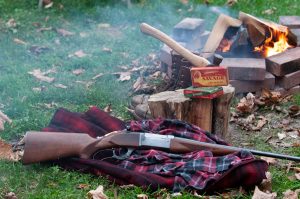
A vintage Savage Model 99 chambered in .300 Savage. While out of production, these rifles are prized by collectors and hunters alike.
The Winchester Model 88—long out of production—used a rotating bolt and detachable magazine, and displayed fine accuracy. If you can find one, think long and hard about it, as it is a very cool rifle.
Browning’s BLR is another of the modern lever guns, perfectly at home in any hunting situation. Chambered in classic cartridges like the .30-’06 Springfield and .270 Winchester and using a detachable magazine, this is certainly a level-action not relegated to close-range work. Take this one anywhere a bolt-action chambered for the same cartridge could go.
They’re Portable, Too!
Many lever guns are available in a “take-down” configuration, meaning that the rifle intentionally disassembles into two pieces for ease of travel, making a cool rifle even cooler. A lever-action rifle is much narrower than its bolt-action counterparts and so it fits very nicely in your hand while heading to the stand or stalking whitetails along the logging roads. They are often lighter weight and shorter overall than other rifles, too, which makes long still hunts or maneuvering in tight quarters easier.
What’s not to love? Spend a little time with one in the fall woods, and you’ll easily understand why Grandpa appreciated his lever-action rifle so much.
*-*-*-*-*-
Phil Massaro’s expertise both with firearm and sentence has quickly given him a hard-earned reputation in the outdoor industry. Hunting in his native New York state since the age of 14, Massaro now travels the world, pursuing everything from the whitetails and black bears of New England to red stag in Scotland, Cape buffalo in Zambia and Mozambique, elephant in Zimbabwe and water buffalo in Australia. His work appears regularly in the NRA’s American Hunter and Shooting Illustrated, Gun Digest, Guns & Ammo and Dallas Safari Club’s Game Trails Magazine, often accompanied by the photography of his wife, Suzie, also an avid hunter. When not writing or hunting, he works as a professional land surveyor alongside his father, and he also manages to squeeze in time at the reloading bench of Massaro Ballistic Laboratories, the custom ammunition company he founded. No, he doesn’t sleep.
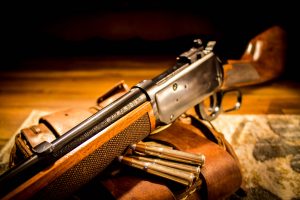
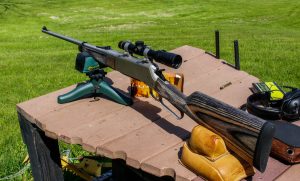
 Dylan Hazen[/caption]
Hunters registered 50,435 wild turkeys in Wisconsin's 2024 spring season, a 22% increase over the five-year average and the fourth highest in state history, reflecting the state's strong turkey population and favorable conditions. Mild winters and warm, dry springs contributed to excellent adult survival and nesting success, leading to more turkeys on the landscape. The 2024 season marks the fourth time Wisconsin hunters have harvested over 50,000 turkeys, with similar successes noted in neighboring states. The Wisconsin DNR's turkey management strategies, validated by these results, continue to support sustainable hunting practices and population growth.
Dylan Hazen[/caption]
Hunters registered 50,435 wild turkeys in Wisconsin's 2024 spring season, a 22% increase over the five-year average and the fourth highest in state history, reflecting the state's strong turkey population and favorable conditions. Mild winters and warm, dry springs contributed to excellent adult survival and nesting success, leading to more turkeys on the landscape. The 2024 season marks the fourth time Wisconsin hunters have harvested over 50,000 turkeys, with similar successes noted in neighboring states. The Wisconsin DNR's turkey management strategies, validated by these results, continue to support sustainable hunting practices and population growth.  Bill Marchel[/caption]
Minnesota wild turkey hunters achieved a record harvest this spring, bagging over 16,600 birds, a 19% increase from the previous record. Contributing factors included an abundance of gobblers and favorable weather conditions, leading to greater opportunities for hunters. Youth participation also rose significantly, with notable increases in license sales, particularly among younger hunters. This success is attributed to ideal nesting conditions and mild winter, which helped more turkeys survive and thrive.
Bill Marchel[/caption]
Minnesota wild turkey hunters achieved a record harvest this spring, bagging over 16,600 birds, a 19% increase from the previous record. Contributing factors included an abundance of gobblers and favorable weather conditions, leading to greater opportunities for hunters. Youth participation also rose significantly, with notable increases in license sales, particularly among younger hunters. This success is attributed to ideal nesting conditions and mild winter, which helped more turkeys survive and thrive.  Photo courtesy HOC[/caption]
The article highlights the challenges and mission of Hunters of Color (HOC), an organization aiming to create equal opportunities in hunting for underrepresented groups. Founded by Jimmy Flatt, HOC focuses on providing mentorship and fostering a diverse outdoors community. Participants like Johnson and Hentati, who lacked hunting mentors growing up, find support and guidance through HOC, which also emphasizes conservation. Despite facing barriers, including a predominantly white hunting culture and racial incidents, HOC persists in promoting inclusivity and expanding hunting opportunities for people of color.
Photo courtesy HOC[/caption]
The article highlights the challenges and mission of Hunters of Color (HOC), an organization aiming to create equal opportunities in hunting for underrepresented groups. Founded by Jimmy Flatt, HOC focuses on providing mentorship and fostering a diverse outdoors community. Participants like Johnson and Hentati, who lacked hunting mentors growing up, find support and guidance through HOC, which also emphasizes conservation. Despite facing barriers, including a predominantly white hunting culture and racial incidents, HOC persists in promoting inclusivity and expanding hunting opportunities for people of color.  This article
This article  Roscoe Spaulding[/caption]
Discover how Roscoe Spaulding revitalized Wayne County's turkey population and became a legendary mentor in the hunting community. Learn about his unique methods of raising and releasing turkey chicks and his lifelong dedication to teaching others the art of turkey hunting. Dive into the story of the inaugural Roscoe Spaulding Memorial Turkey Hunt, an event honoring his legacy and funding a headstone and future scholarship, showcasing the lasting impact of this remarkable conservationist and community figure.
Roscoe Spaulding[/caption]
Discover how Roscoe Spaulding revitalized Wayne County's turkey population and became a legendary mentor in the hunting community. Learn about his unique methods of raising and releasing turkey chicks and his lifelong dedication to teaching others the art of turkey hunting. Dive into the story of the inaugural Roscoe Spaulding Memorial Turkey Hunt, an event honoring his legacy and funding a headstone and future scholarship, showcasing the lasting impact of this remarkable conservationist and community figure. 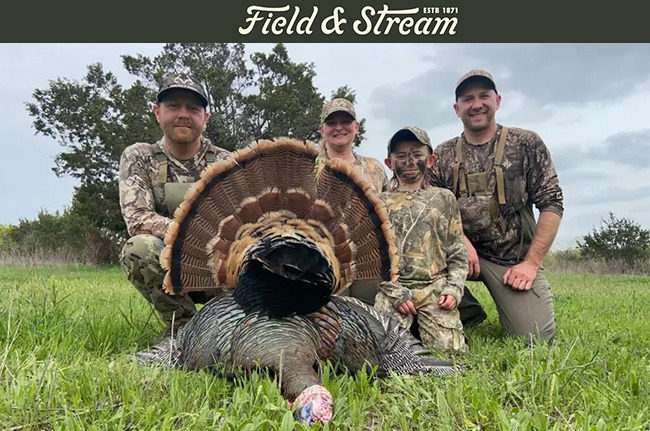 The author reflects on an exceptional turkey hunting season, spanning 30 days across various states from late March to early May. He notes an encouraging rebound in turkey populations in many areas, with harvest statistics showing increases, despite mixed impacts from regulatory changes. The author emphasizes the role of predation and habitat quality in turkey declines, advocating for better private land management. He also highlights the importance of perseverance when hunting, sharing anecdotes of successful hunts after initial setbacks, and concludes with observations on the effectiveness of different calling techniques and the variability of late-season gobbling patterns.
The author reflects on an exceptional turkey hunting season, spanning 30 days across various states from late March to early May. He notes an encouraging rebound in turkey populations in many areas, with harvest statistics showing increases, despite mixed impacts from regulatory changes. The author emphasizes the role of predation and habitat quality in turkey declines, advocating for better private land management. He also highlights the importance of perseverance when hunting, sharing anecdotes of successful hunts after initial setbacks, and concludes with observations on the effectiveness of different calling techniques and the variability of late-season gobbling patterns.  Jeff Neill has several years’ experience hunting turkeys in his native Wisconsin, but traveling the country and encountering the different strategies that go along with differing terrain has heated his passion for the springtime pursuit to a fever pitch. The experience has kindled a fire in the adventurer’s soul for Neill. With Easterns and now an Osceola to his credit, he’s halfway to the Wild Turkey Grand Slam.
Jeff Neill has several years’ experience hunting turkeys in his native Wisconsin, but traveling the country and encountering the different strategies that go along with differing terrain has heated his passion for the springtime pursuit to a fever pitch. The experience has kindled a fire in the adventurer’s soul for Neill. With Easterns and now an Osceola to his credit, he’s halfway to the Wild Turkey Grand Slam.  Eight-year-old Vaughn Siver bagged a rare bearded hen with smoke-phase coloration during his first turkey hunt in early May in western South Dakota, accompanied by his dad, Cody. After setting up camp and scouting, they set up ground blinds and, despite initial challenges, Vaughn successfully shot the unique bird. Cody also managed to fill his tag by shooting a tom later. The experience, marked by the discovery of the rare leucistic turkey, made the hunt unforgettable for Vaughn, who enjoyed both the hunt and the camping adventure.
Eight-year-old Vaughn Siver bagged a rare bearded hen with smoke-phase coloration during his first turkey hunt in early May in western South Dakota, accompanied by his dad, Cody. After setting up camp and scouting, they set up ground blinds and, despite initial challenges, Vaughn successfully shot the unique bird. Cody also managed to fill his tag by shooting a tom later. The experience, marked by the discovery of the rare leucistic turkey, made the hunt unforgettable for Vaughn, who enjoyed both the hunt and the camping adventure. 
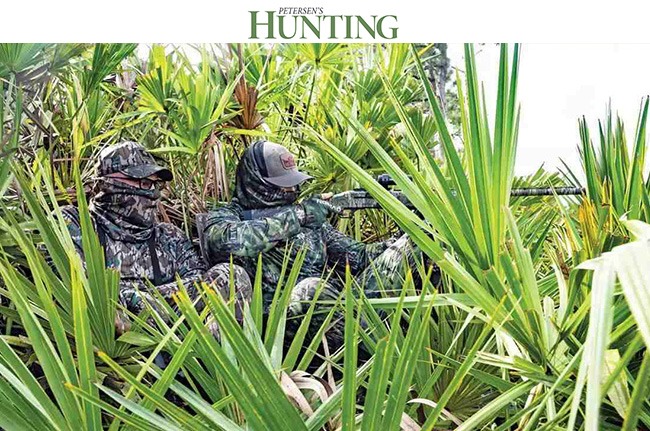
 The article reflects on the joy and memories created during the 2024 wild turkey hunting season, which has been successful for both young and seasoned hunters in Franklin County. The author emphasizes that the greatest moments in turkey hunting are not just about the harvest but about sharing the experience with family and friends and passing on the tradition to the next generation. A highlight of the season is the story of Joe Warger and his son Casey, who reunited for a memorable hunt after nine years, exemplifying the deep bonds and cherished memories formed through turkey hunting. The article underscores the profound connection and joy that hunters feel when they engage with nature and share these experiences with loved ones.
The article reflects on the joy and memories created during the 2024 wild turkey hunting season, which has been successful for both young and seasoned hunters in Franklin County. The author emphasizes that the greatest moments in turkey hunting are not just about the harvest but about sharing the experience with family and friends and passing on the tradition to the next generation. A highlight of the season is the story of Joe Warger and his son Casey, who reunited for a memorable hunt after nine years, exemplifying the deep bonds and cherished memories formed through turkey hunting. The article underscores the profound connection and joy that hunters feel when they engage with nature and share these experiences with loved ones.  The 2024 Spring Turkey season was memorable for the author, although no turkeys were harvested. Despite the lack of a successful hunt, the author cherished various experiences such as hearing turkey drumming, encountering wildlife, and enjoying the beauty of the outdoors. Memorable moments included observing turkeys, dealing with unpredictable weather, and encountering snakes and turtles. The author emphasizes the joy of being in nature and looks forward to future outdoor activities and habitat work.
The 2024 Spring Turkey season was memorable for the author, although no turkeys were harvested. Despite the lack of a successful hunt, the author cherished various experiences such as hearing turkey drumming, encountering wildlife, and enjoying the beauty of the outdoors. Memorable moments included observing turkeys, dealing with unpredictable weather, and encountering snakes and turtles. The author emphasizes the joy of being in nature and looks forward to future outdoor activities and habitat work.  John Hafner Photography[/caption]
Dr. Mike Chamberlain, known as the "Turkey Doctor," provided an update on the state of wild turkeys, noting mixed observations from the 2024 season. While some areas, like Arkansas, show signs of population recovery, other regions, particularly in the Southeast and Midwest, continue to experience declines. He emphasized the importance of ongoing research, which is currently more extensive and collaborative than ever, aimed at understanding and addressing factors affecting turkey populations. Chamberlain remains cautiously optimistic, highlighting that comprehensive and standardized research will eventually yield the answers needed to stabilize and improve wild turkey numbers.
John Hafner Photography[/caption]
Dr. Mike Chamberlain, known as the "Turkey Doctor," provided an update on the state of wild turkeys, noting mixed observations from the 2024 season. While some areas, like Arkansas, show signs of population recovery, other regions, particularly in the Southeast and Midwest, continue to experience declines. He emphasized the importance of ongoing research, which is currently more extensive and collaborative than ever, aimed at understanding and addressing factors affecting turkey populations. Chamberlain remains cautiously optimistic, highlighting that comprehensive and standardized research will eventually yield the answers needed to stabilize and improve wild turkey numbers. 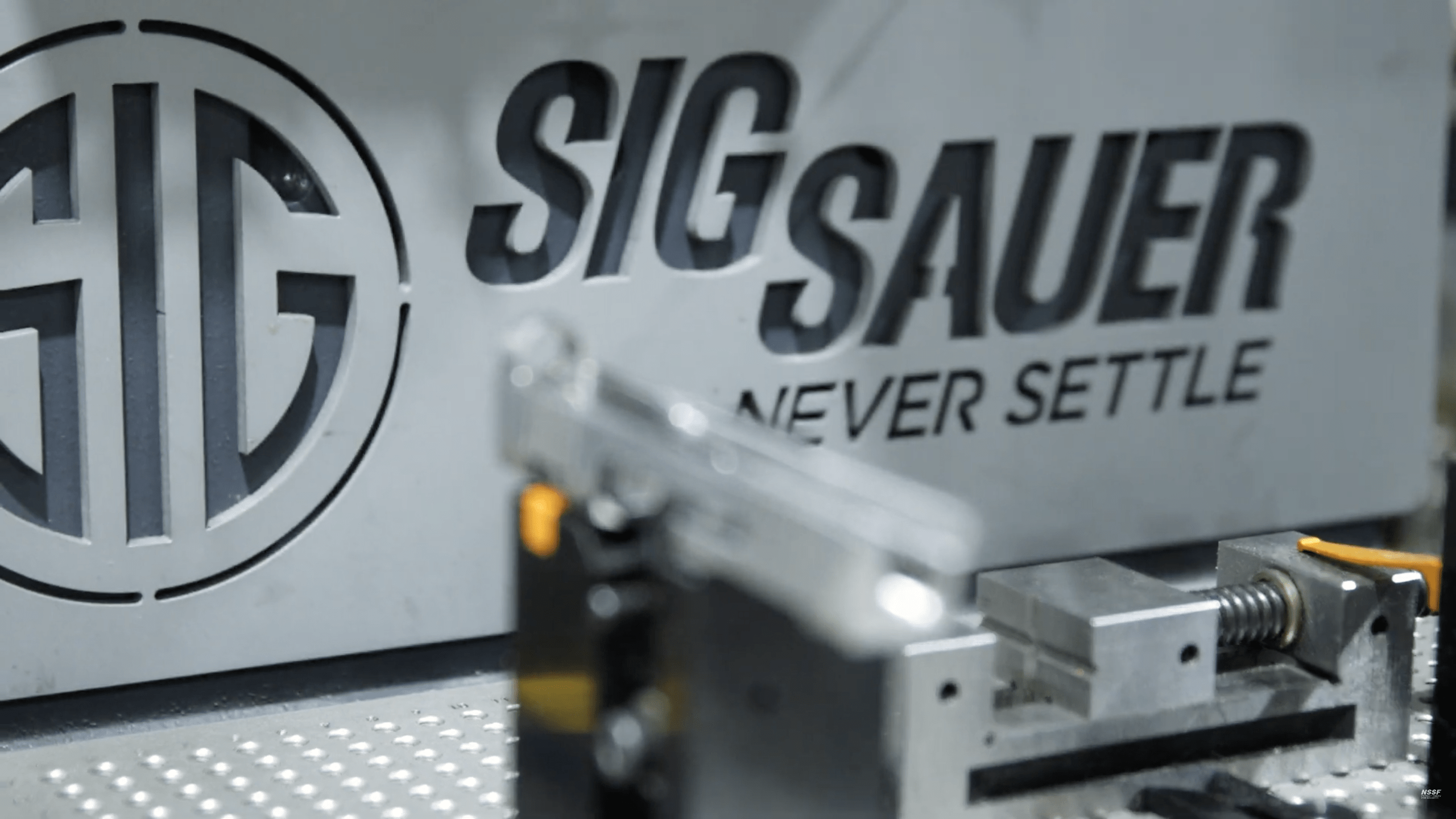

 The partnership between firearm manufacturers and wildlife conservation agencies is a model for the world. It shows how industry participation can positively impact the environment and highlights the need for ongoing support for conservation efforts.
In short, the relationship between firearm manufacturers and wildlife conservation is vital. By understanding how excise taxes and industry contributions fund conservation, hunters and shooters can see the positive impact their purchases have on preserving nature for future generations.
Partner with a Payer
The Partner with a Payer initiative was developed to help generations of employees in the firearm, archery and angling industries, state agencies and the U.S. Fish and Wildlife Service to better understand their, and each other’s, roles in conservation.
The partnership between firearm manufacturers and wildlife conservation agencies is a model for the world. It shows how industry participation can positively impact the environment and highlights the need for ongoing support for conservation efforts.
In short, the relationship between firearm manufacturers and wildlife conservation is vital. By understanding how excise taxes and industry contributions fund conservation, hunters and shooters can see the positive impact their purchases have on preserving nature for future generations.
Partner with a Payer
The Partner with a Payer initiative was developed to help generations of employees in the firearm, archery and angling industries, state agencies and the U.S. Fish and Wildlife Service to better understand their, and each other’s, roles in conservation.